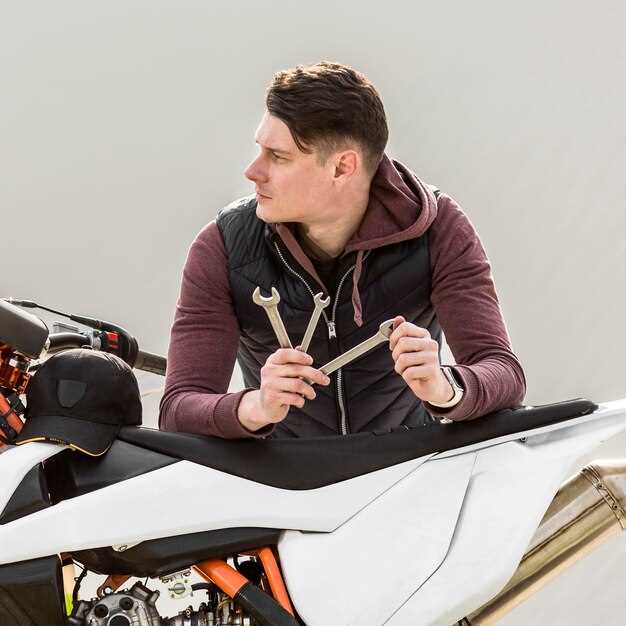
Unlocking the true potential of your vehicle often feels like a race against time and technology. Many enthusiasts believe that only professional tuners have the necessary skills and knowledge to enhance performance. However, with the right DIY pro tuning tips, you can discover the secrets that will elevate your vehicle to a higher level. This article aims to provide you with actionable insights that can transform your ride into a powerhouse on the road.
Understanding the basics of vehicle performance tuning is essential for any car enthusiast looking to delve into DIY modifications. From engine upgrades to suspension tweaks, the secrets of professional tuning can be applied at home with the right tools and techniques. In this guide, we’ll explore critical elements such as optimizing air intake, adjusting fuel maps, and fine-tuning throttle response to achieve a balance between power and efficiency.
As you embark on this tuning journey, remember that patience and precision are your best allies. With dedication, you will learn how to extract every ounce of performance from your vehicle, putting you on par with professional racers. Gear up to dive into the world of DIY pro tuning and unleash the hidden potential of your car!
Optimizing Engine Tuning for Maximum Power Output

When it comes to enhancing your vehicle’s performance, engine tuning is a crucial step that can lead to significant power gains. Whether you’re preparing for a race or simply want to experience improved driving dynamics, understanding the principles of tuning can make all the difference.
First and foremost, consider the fuel map. Adjusting the air-fuel ratio is vital in achieving optimal combustion within the engine. A rich mixture can lead to increased power at the cost of efficiency, while a lean mixture may improve fuel economy but could hinder performance. Striking the right balance is essential for maximizing output without compromising engine reliability.
Next, focus on ignition timing. Advanced ignition timing can enhance power by allowing the fuel to ignite at the most effective point in the compression cycle. However, pushing this too far can result in knocking. Utilizing a pro tuning software or dyno testing can help pinpoint the ideal timing for your engine configuration.
In addition, upgrading your intake and exhaust systems plays a significant role in optimizing engine performance. A less restrictive exhaust system enables quicker gas expulsion, which in turn enhances overall engine efficiency and power. Similarly, improving the intake system allows for greater airflow, contributing to a more powerful combustion process.
Don’t overlook ECU remapping. The ECU (Engine Control Unit) governs many parameters, and a professional remap can unlock hidden potential in the engine. This process recalibrates the engine settings based on the adjustments made to the intake and exhaust systems, ensuring that the vehicle performs optimally.
Finally, remember to keep a close eye on engine temperature. An effectively tuned engine often runs hotter due to increased performance. Ensuring your cooling system is up to par will prevent overheating and maintain consistent power output during prolonged use.
By implementing these pro tuning tips, you can optimize your engine for maximum power output, transforming your vehicle into a formidable competitor on the racing circuit or enhancing your everyday driving experience.
Upgrading Suspension for Improved Handling on the Track
One of the most effective ways to enhance your vehicle’s performance on the track is by upgrading its suspension system. This upgrade can drastically improve your handling, responsiveness, and overall driving experience. Here are some pro secrets to consider when tuning your suspension for optimal performance.
Firstly, choosing the right suspension components is crucial. High-performance coilovers or adjustable dampers can provide greater control over your ride height and damping settings. This allows you to tailor your vehicle’s handling characteristics to match track conditions, enhancing grip and stability during high-speed maneuvers.
Secondly, consider upgrading your sway bars. Thicker sway bars reduce body roll during cornering, which translates to improved handling and driver confidence. These components work by distributing weight more effectively, allowing for sharper turns and a more planted feel as you navigate twists and turns on the circuit.
Additionally, invest in quality bushings. Stock rubber bushings tend to flex under load, compromising handling precision. Polyurethane or solid bushings offer improved response and durability, making them an excellent choice for serious track enthusiasts. By reducing deflection during hard cornering, these bushings enhance the connection between your chassis and suspension components.
Finally, align your suspension settings correctly. Proper alignment is vital for maximizing your vehicle’s handling capabilities. Focus on achieving the right camber, toe, and caster angles tailored to your driving style and the specific track layout. A well-aligned suspension not only improves tire wear but also boosts stability and cornering performance.
Upgrading your suspension is an essential step in pro-level tuning, unlocking your vehicle’s full potential on the track. By selecting the right components, tuning with precision, and paying attention to alignment, you can achieve a remarkable improvement in handling that will elevate your performance to new heights.
Enhancing Aerodynamics to Boost Speed and Stability

Improving the aerodynamics of your vehicle is a vital aspect of pro tuning that directly influences both speed and stability, especially for those looking to compete in races. A vehicle’s aerodynamics can either enhance or hinder its performance, so understanding how to refine this aspect is essential for any serious tuner.
Firstly, consider the shape of your vehicle. A streamlined design minimizes air resistance, allowing for faster speeds. Rounded edges and a sloping roofline can significantly improve airflow, reducing drag. Modifying components such as the front bumper, side skirts, and rear diffuser can also contribute to a more aerodynamic profile.
Adding a rear wing or spoiler can enhance downforce, providing better traction at high speeds. This not only increases stability during racing but also helps maintain control through sharp turns. Selecting the right wing angle is critical; it should be adjustable if you plan on attending different race events with varying requirements.
Weight reduction is another important factor. Removing unnecessary components or replacing them with lighter materials can contribute to improved handling and speed. Every pound removed enhances acceleration and braking response, which is crucial during competitive racing scenarios.
Incorporating a front splitter can further enhance aerodynamics by directing airflow around the vehicle, reducing lift and increasing stability. This modification works best when combined with proper wheel alignment to ensure optimal handling and performance on the track.
Finally, tire selection plays a role in aerodynamics. Low-profile tires reduce the vehicle’s overall height, minimizing wind resistance. Moreover, ensuring that tires have a proper air pressure can prevent drag and improve the overall efficiency of the vehicle during pro tuning.
In conclusion, enhancing your vehicle’s aerodynamics is essential for boosting speed and stability. By focusing on design modifications, downforce enhancements, weight reduction, and optimal tire selection, you can achieve a competitive edge in any race scenario.



